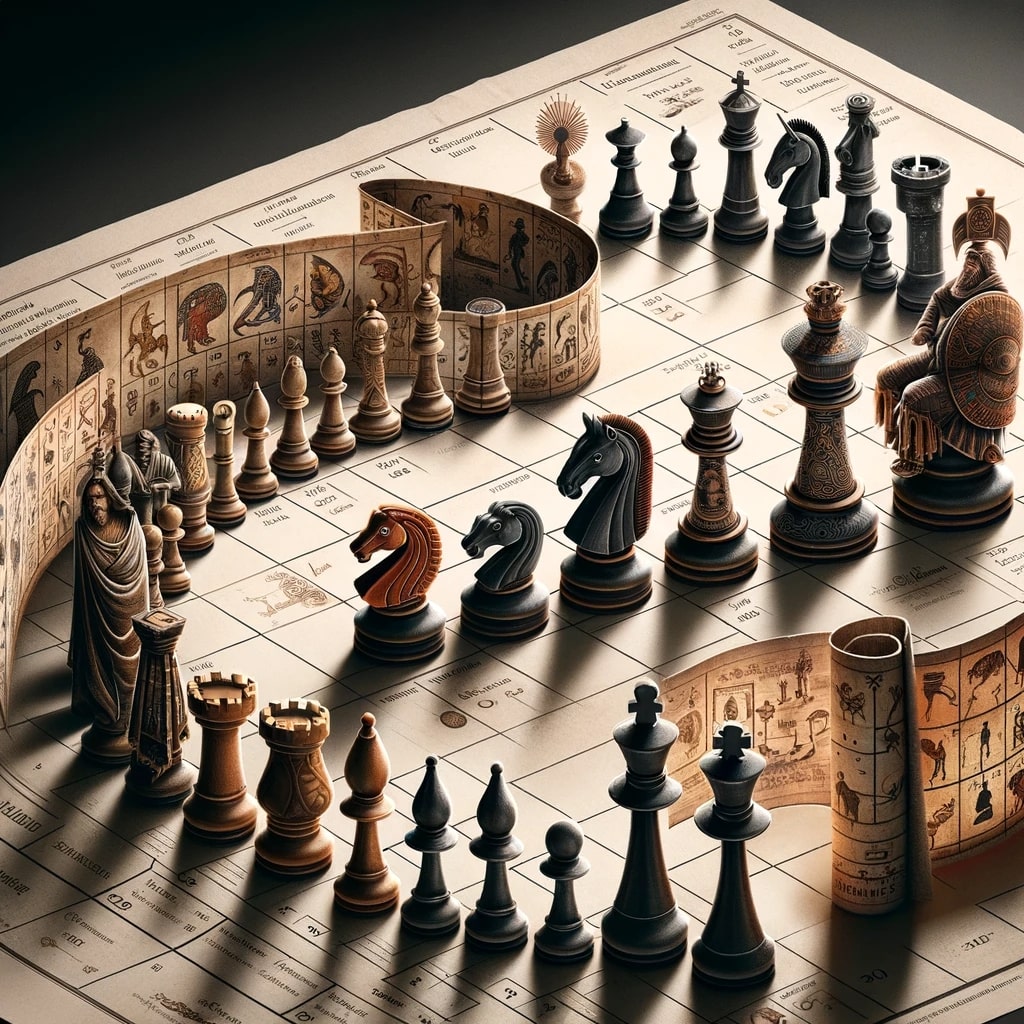Evolution of Chess Pieces Through History: A Comprehensive Guide
December 28, 2023
In the grand tapestry of board games, none has stood the test of time quite like chess. This comprehensive guide explores the remarkable evolution of chess pieces, offering a window into the rich history of chess and how it has shaped modern gameplay.

Evolution of chess pieces through history
Bishop: From Ancient Elephants to Diagonal Dominance
The transformation of the bishop from an ancient “elephant” or “al-fil” in early chess variants to its current form as a powerful diagonal mover is a striking example of strategic evolution. This change, emerging from the game’s spread into Europe, significantly enhanced the bishop’s role in attack and defense strategies.
King and Castling: Revolutionizing Royal Safety
The introduction of castling in chess revolutionized the game, providing a unique method for players to safeguard their king while activating their rook. This evolution, emerging around the 14th or 15th century, added a new layer of depth and strategy to chess.
Queen: A Story of Unparalleled Power
Perhaps no piece has undergone as dramatic a transformation as the queen. Evolving from the modestly moving “vizier” to the most formidable piece on the board, the queen’s journey mirrors the dynamic changes in chess tactics over the centuries.
Rook: Commanding the Ranks and Files
Originally moving diagonally in its early iterations, the rook’s evolution to its current movement – dominating ranks and files – dramatically altered the game’s strategic landscape. This change underscored the importance of controlling key lines on the chessboard.
Knight: The Consistent Cavalry
The knight’s unique “L-shaped” move has been a constant in chess, a testament to the enduring value of its unorthodox movement. This piece’s ability to ‘jump’ over others adds an element of surprise and complexity to the game.
Pawn: Small Steps Leading to Major Changes
The humble pawn has seen significant changes, particularly with the introduction of the option for a two-square initial move and the tactical “en passant” rule. These modifications have enhanced the pawn’s role from a mere foot soldier to a key player in strategic planning.
Final Reflections:
The enduring allure of chess lies in its evolving nature, where each piece tells a story of historical adaptations and tactical revolutions. The evolution of chess pieces is not just a reflection of the game’s history, but a mirror to the strategic depths that make chess an eternally engaging game.
Stay with us for more in-depth explorations into the captivating world of chess and other classic games.
